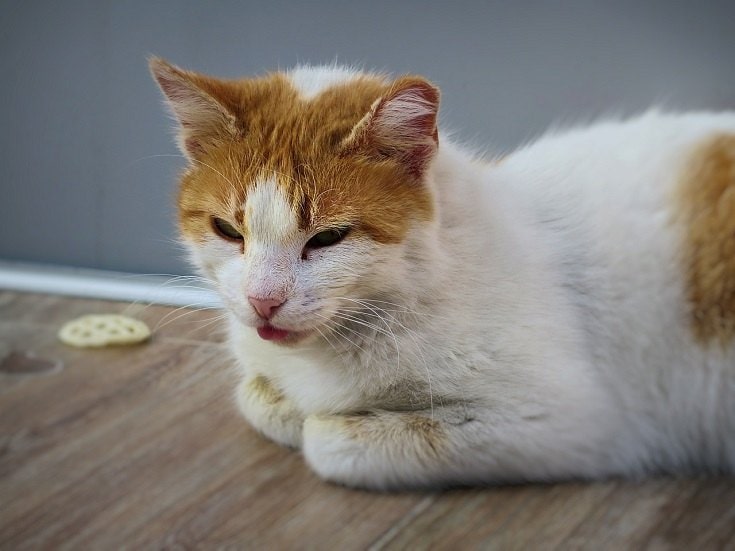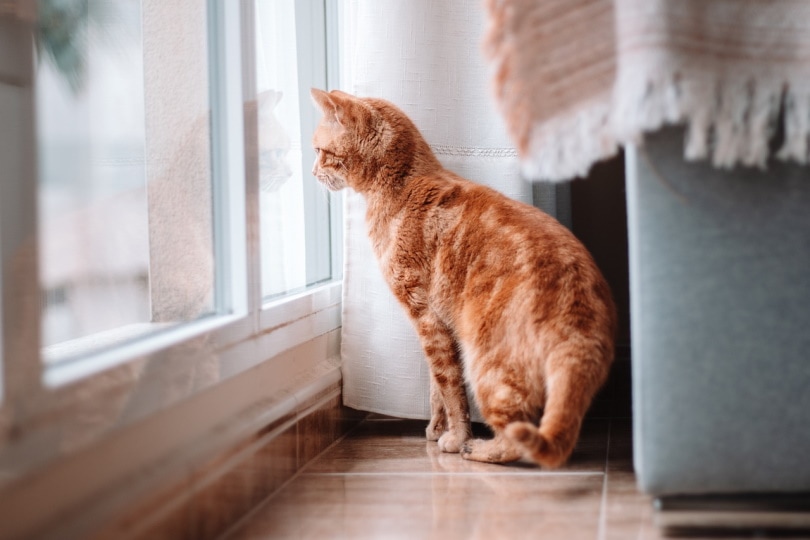
FIV is short for Feline Immunodeficiency Virus. It is a highly infectious virus that interferes with the immune system of cats. While the virus is very similar to HIV (Human Immunodeficiency Virus), they are not related. One cannot cause the other. FIV is restricted to just cats, and there is no risk of feline-to-human transmission.
FIV leads to the eventual development of feline aids. Testing positive for FIV means that the virus is present, but it may be some time if it develops into the clinical signs of feline aids. FIV has no cure and will eventually be terminal.
FIV has no unique, identifying clinical signs of its own. Still, it leads to an impaired immune system, making an FIV-positive cat vulnerable to normally harmless bacteria in their environment. With good care, an FIV-positive cat can still live a long and happy life.
Causes
Understanding FIV and its signs is vital. Knowing what causes it is just as important.
FIV is infectious, and cats contract it when they come into contact with another infected cat. The FIV virus mode of transmission is via saliva of an infected cat coming into contact with the blood of an unexposed cat.
The most common cause of transmission is from biting. A bite from an infected cat can carry the virus from the saliva into the bloodstream. Mother cats can also pass FIV onto their offspring both via the placenta and milk production (however, this is considered very rare).
The most common carriers of this virus are older, roaming, non-neutered male cats – these cats are most likely to fight other cats (and therefore get infected via a bite wound). While it is infectious, it is not passed on via other close cat activities such as grooming, sneezing, sharing a food bowl or a litter box.

The Clinical Signs of FIV
There are three phases of infection with FIV – the acute phase, the asymptomatic (or latent) phase, and the progressive phase. The signs for each phase are different.
1. Acute Phase
This phase usually happens within 4–12 weeks of exposure to the virus. Cats will show mild and general signs of poor health, with the most obvious sign being the enlargement of multiple lymph nodes and a fever. This is often seen as a general illness, and many cats aren’t seen by a vet and recover quickly at this stage.

2. Asymptomatic Carrier
The cats appear healthy during this stage, which can last months to years without apparent signs. Cats who are in the elderly stages of life may progress a lot quicker.
There are no clinical signs of the virus at this stage, and cats appear otherwise normal as the virus slowly replicates itself in their body. At this stage, a bloodwork of cats may show white blood cell abnormalities, which is why it’s crucial to have periodic welfare health checks for your cat, even if they appear perfectly healthy.
Some cats may stay in this stage for their entire life and never progress to the final stage of the infection.
3. Immunocompromised Stage
As the virus continues to replicate in a cat’s body, it eventually weakens the cat’s immune system. The virus itself is rarely the reason a cat eventually succumbs to illness. Often, cats progressively get worse with recurring illnesses and chronic issues involving several body systems.

Treatment
There is no cure for FIV. Once a cat is diagnosed as FIV-positive, a lifelong management plan will be implemented to provide the best care. Ensuring positive welfare and quality of life is essential as they progress through their illness.
Treatment will involve proactive measures in keeping your cat healthy and supporting its immune system. This looks like:
As the virus progresses, treatment will be based on the secondary infection that has been contracted. The extent of treatment will depend on the severity of the presenting illness.

Prevention
Prevention of FIV for your cat involves keeping your cat away from FIV-positive cats and out of situations in which it can be transmitted. While you can’t have total control over this, you can implement a range of preventative measures to minimize the risk.
Remember that due to the asymptomatic period, often when an FIV-positive cat is diagnosed, they may have already been living with other healthy cats for years. In which case, other cats in the household may already have become infected.
However, homes with stable social structures of cats have less fighting, so uninfected cats may also be living alongside infected cats. Once diagnosed, the infected cat should be isolated if there are other FIV-negative cats in the household. Although the others may never become infected, the risk should not be taken.
Conclusion
Since cats can be infected with FIV without being diagnosed, the true scope of this virus is not actively known. While it is a very serious virus, there’s no need to panic as it’s thought only 2.5-5% of cats in North America are FIV-positive.
Education of risks will help you keep your cat in good health. Your cat can stay happy, healthy, and thriving when you provide it with all the best care!
Featured Image Credit: one photo, Shutterstock








